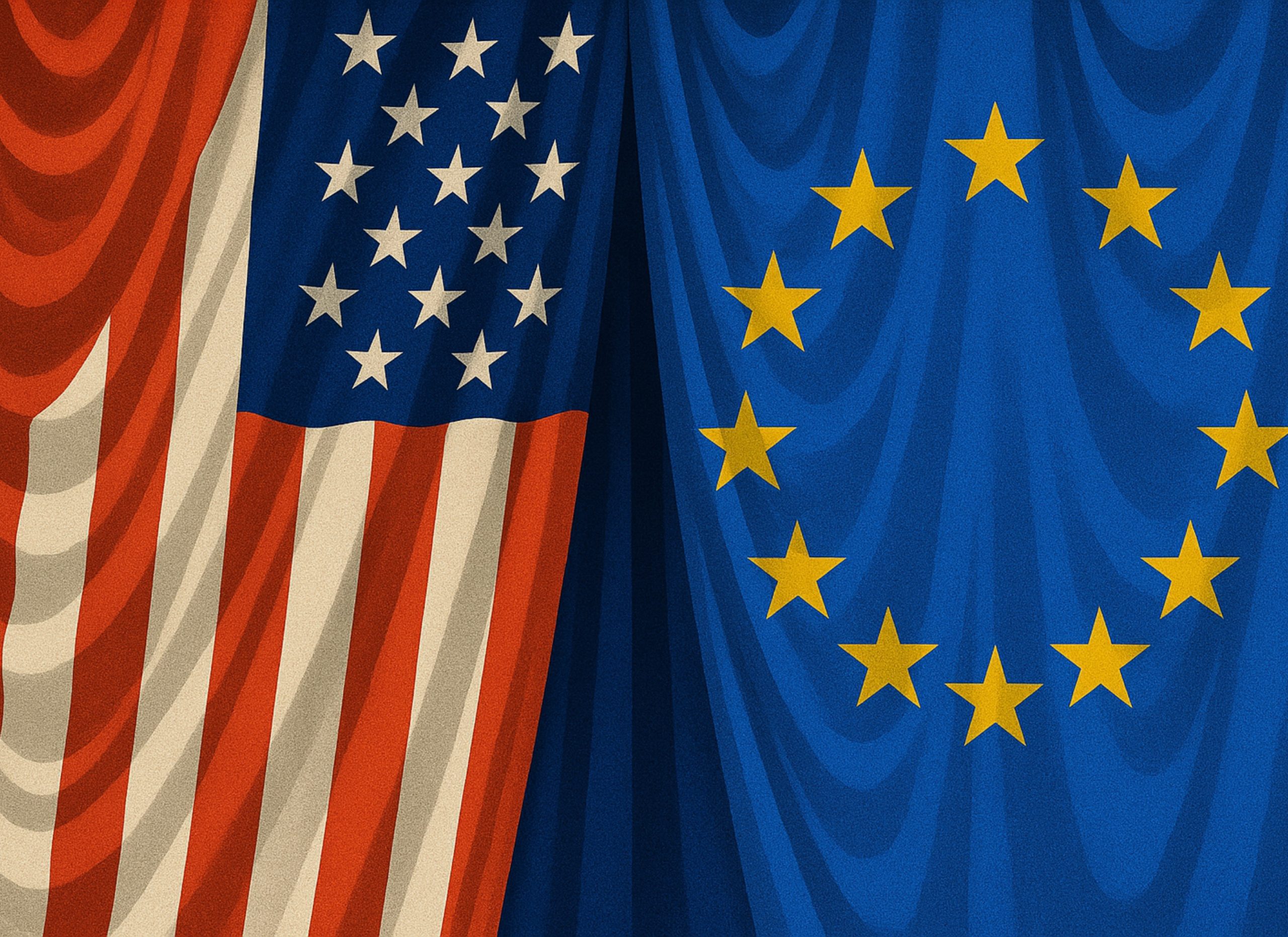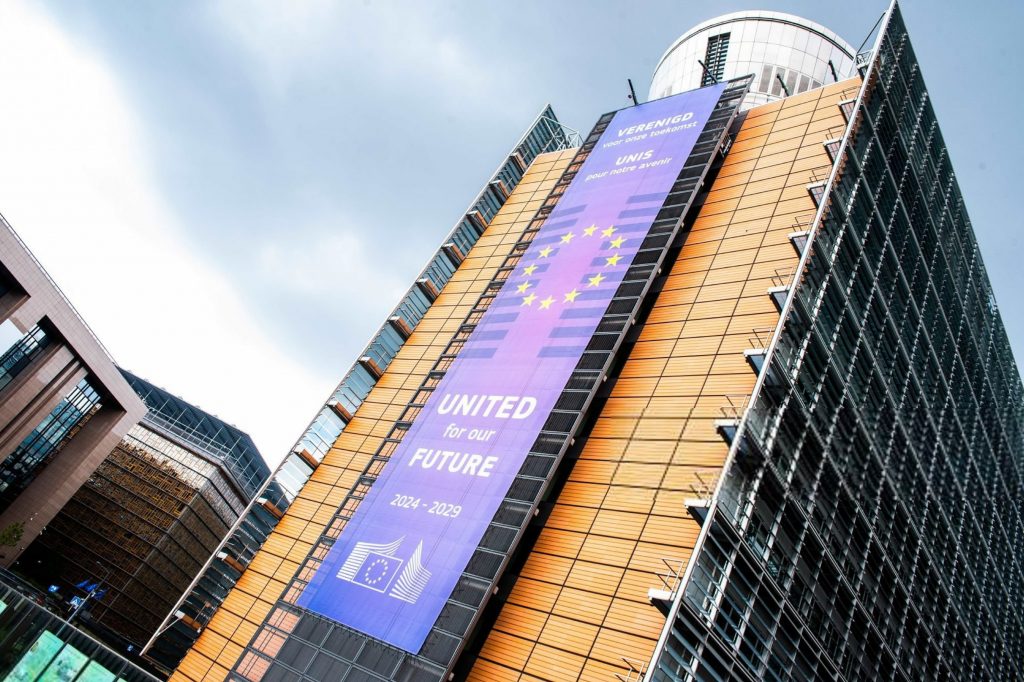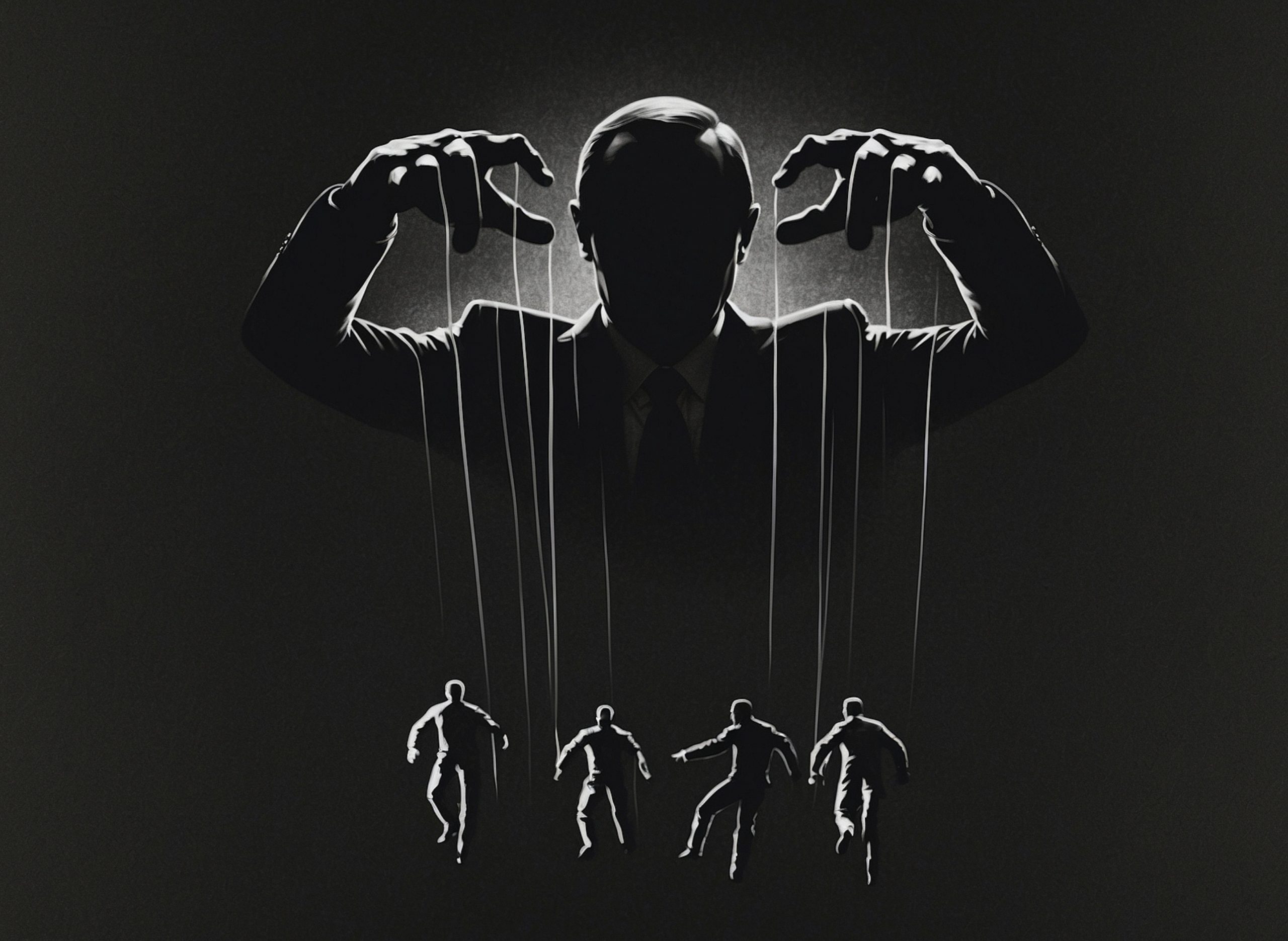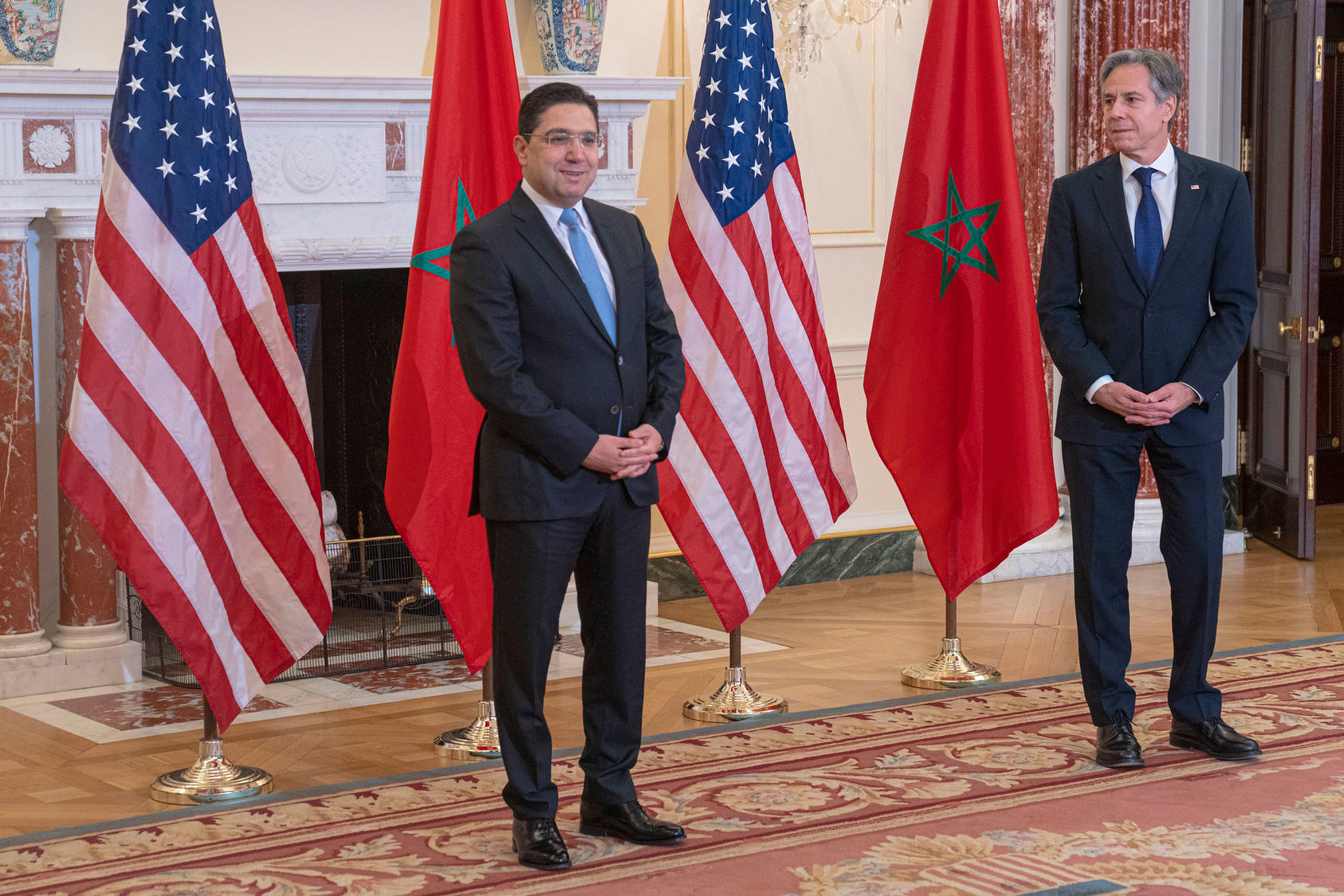
When the Dream Turns Dangerous
What Does a Strong Europe Mean for America?
By | Lorenzo Izzi,
NOVEMBER 03, 2025
Fall 2025
Ever since the end of the Cold War, experts and policymakers have placed high expectations on the European Union to fulfil its role in international affairs. Throughout the 1990s, it was widely believed that the at-the-time European Community would seize the opportunity presented by the fast-changing security architecture and develop both credible hard-power capabilities and a coherent foreign policy. Yet the extent to which this would challenge U.S. hegemony remained a matter of debate. Some argued that a strong Europe could have catastrophic consequences for the transatlantic partnership, pushing the continent toward balancing against Washington. Others believed that a united and confident Europe would instead help secure a more peaceful world—two liberal poles, sharing values and institutions, standing as co-guardians of progress.
As often happens in foreign policy, reality refused to take sides. Washington, especially under the Clinton administration, encouraged Europe to assume greater global responsibility, yet reacted sharply whenever those actions clashed with American interests. Europe did achieve meaningful progress in foreign and security policy, as later developments would show, but the larger debate remains unsettled: would a strong Europe hinder or enhance American power? The question endures, partly because the EU has not yet reached its full potential as a great power. In essence, what does a strong Europe truly mean for the United States?
Although the debate seems to demand a simple either/or answer, the reality is far more complex. The European Union’s pursuit of strategic autonomy stands as both an asset and a disruption—a development that strengthens the transatlantic alliance but also forces a rethinking of its balance of power. As Europe begins to act with greater confidence in foreign and security affairs, its traditional role as Washington’s junior partner no longer suits its ambitions. For the United States, maintaining a reliable ally now requires recognizing Europe as an equal, not a subordinate. The central question, then, is how this growing autonomy reshapes the pattern of American leadership—and what a partnership between equals might look like in an increasingly multipolar world.
How the Alliance Was Made
Following the end of the Second World War, which saw the Allies defeat the fascist regimes of Germany, Japan, and Italy, a new world emerged. Former allies—the United States and the Soviet Union—quickly turned into rivals. The Americans demonstrated their strength by liberating France and Italy and defeating Japan with the help of a weapon that only they possessed at the time: the atomic bomb. The Soviets, meanwhile, marched into Berlin, bearing the heavy cost of victory against Nazi Germany. Europe found itself caught in the middle of this confrontation, left to recover from the ruins of war while standing between two emerging superpowers. Soon, the continent was split in two. Eastern Europe, stretching from East Germany to what is now Ukraine, fell firmly under Moscow’s grip and adopted Soviet-style regimes.
Western Europe, in turn, became part of the American sphere of influence. Yet communist parties were gaining strength within several Western European countries, raising fears that they might drift toward the Soviet camp. To counter this threat, Washington moved decisively—backed by covert CIA operations and a massive financial commitment known as the Economic Recovery Act, or the Marshall Plan. This unprecedented wave of economic aid rebuilt Western Europe’s economies and tied them firmly to the transatlantic order. From that moment until the end of the Cold War, Europe grew as America’s indispensable but subordinate partner—a junior ally in a global contest between two worlds.
Additionally, these relationships were soon institutionalised through the creation of NATO, which followed a concrete attempt by the Europeans to establish a common defence community. Under the terms of this early pan-European initiative—one that ultimately failed to secure ratification from the French parliament—the central concern was the rearmament of West Germany after its defeat in the Second World War. Initially reluctant, the United States eventually recognised that a strong European Defence Community would serve two strategic purposes: ensuring a solid frontline in case of a Red Army invasion, and maintaining oversight over West Germany’s military revival.
However, when the Treaty of Paris was rejected by the French National Assembly, Washington understood that its objectives could best be achieved through an alliance framework led by the United States itself. Thus, NATO emerged as the primary institutional embodiment of the transatlantic relationship—one in which Europeans were incorporated into the American security structure and their rearmament process monitored within it. From the outset, leadership clearly rested across the Atlantic. Europeans became the junior partners of American foreign policy, granted limited room for manoeuvre within an architecture defined by the dynamics of great power confrontation. Having established this structural foundation of the transatlantic order, it becomes essential to turn now to the European Union’s recent increase in power—and to consider how this shift has begun to reshape the nature of that long-standing relationship.
The End of Europe’s Sleepwalk
The Russian aggression toward Ukraine stands as perhaps the clearest example of how external crises can accelerate Europe’s hard-power awakening, though it is hardly the first instance of such a dynamic in the post–Cold War era. Europe has often been described as a “superpower in the making” ever since the collapse of the Soviet Union and the political transformation brought by the Maastricht Treaty, which created a single currency and institutionalised the Common Foreign and Security Policy. These events seemed poised to deliver a new pole of global power—one that could either balance or complement the United States. Yet over time, Europe repeatedly proved unprepared to manage the foreign policy crises that came its way.

The first and most telling of these failures was the Yugoslav crisis, which the EU proved unable to resolve on its own. The violent disintegration of Yugoslavia demanded exactly the kind of civil protection, humanitarian coordination, and peacebuilding capacities that were meant to define Europe’s new foreign and security identity under the Treaty on European Union. Political rhetoric at the time matched this ambition. “This is the hour of Europe, not of the United States,” declared Luxembourg’s foreign minister Jacques Poos, chairing the European Community’s Foreign Affairs Council in the summer of 1991—a statement that captured Europe’s desire to act independently and to show its crisis-management skills without relying on Washington. Yet as the conflict deepened and American intervention ultimately proved decisive, the gap between Europe’s ambitions and its capabilities became unmistakable.
However, Europe soon realised that it lacked the hard power capabilities to enforce peace agreements in such a tense environment and was compelled to turn to Washington for help. What followed was a NATO-led mission that culminated in a strategic air campaign in Kosovo, aimed at stopping the ethnic cleansing of Kosovar Albanians by Serbian forces. Thus, although the 1990s were meant to mark Europe’s rise as the world’s second superpower alongside the United States, the continent struggled to meet its own expectations and continued to depend on Washington to resolve complex crises in its neighbourhood.
Two decades later, a similar pattern re-emerged. Russia’s annexation of Crimea in 2014—triggered by Ukraine’s desire to draw closer to the European Union and NATO—once again exposed Europe’s military limitations. The Union found that its only usable form of hard power consisted of sanctions and restrictive measures, constrained by its institutional design and the absence of a unified defence capability. Predictably, these tools failed to deter Moscow. As history later showed, they did little to prevent Russia’s full-scale invasion of Ukraine in 2022.
Yet despite this failure, the crisis marked a turning point in Europe’s geopolitical awakening. The Union began to think in strategic terms, reassessing the vulnerabilities of its interdependence. It recognised that a heavy reliance on Russian gas undermined its autonomy in making foreign policy decisions, prompting a drastic shift in energy policy. From 2022, the EU reduced its gas imports from Russia from 45 to 19 percent and set the goal of full independence by 2027. Simultaneously, Europe began investing seriously in its own hard power. Member states increased defence spending to rebuild military capacity—most notably Germany, which took a historic step by amending its constitution to allow higher military expenditures.
Europe, in short, is no longer sleepwalking through geopolitics.
The effect of these reforms is twofold. First, the European Union is beginning to emerge—slowly but decisively—as a geopolitical security actor, most visibly along its eastern flank. Germany’s decision to deploy its first post–World War II foreign contingent to Lithuania stands as a clear symbol of this shift. Second, the new wave of defence investments is revitalising Europe’s weapons industries, bringing in vast sums of public funding and reviving an industrial base that is central to technological innovation and long-term strategic autonomy.
Europe, in short, is no longer sleepwalking through geopolitics. It is strategically awake—and that awakening carries serious implications for the transatlantic alliance as it has long existed. The key question now is whether this renewed sense of purpose marks the beginning of the end for the asymmetric relationship that defined the Cold War and its aftermath. The answer lies in examining both the opportunities and the risks that Europe’s awakening presents for U.S. foreign policy.
The Unequal Alliance
The answer to this question demands nuance. While Europe’s strategic awakening certainly calls for a restructuring of the transatlantic relationship, it does not signal the end of asymmetry. The first factor that warrants examination is the scope of the two powers’ foreign policy reach. The United States possesses a truly global presence, backed by military deployments, diplomatic networks, and strategic interests that extend to nearly every region of the world. The same cannot be said for the European Union. Despite maintaining 144 delegations worldwide, the Union’s foreign policy reach remains limited by its institutional design. Foreign policy remains primarily a national competence, and common positions must be agreed upon through unanimity—an arrangement that often leads to friction, delay, and inconsistency in the Union’s external actions. Even when collective action is achieved, it tends to focus on the EU’s immediate neighbourhood or on Africa—particularly in former colonial spheres—rather than reflecting a genuinely global scope.
A second and equally fundamental asymmetry lies in military capability. Even when the EU’s 27 member states are considered collectively—a challenging assumption given the issues of duplication and coordination—their combined power still falls far short of that of the United States. Europe may well be on a path toward becoming a more capable international actor, yet structural inequalities remain embedded in the very fabric of the transatlantic partnership. Still, this imbalance does not diminish Europe’s capacity to demand a more balanced and effective relationship. Its recent awakening grants it both the legitimacy and the leverage to reshape the alliance in ways that reflect a changing world. The following sections therefore turn to the opportunities and risks such a redefinition entails.
The West’s Second Wind
Europe’s strategic awakening presents several opportunities for U.S. foreign policy. First, the European Union can evolve into a serious liberal diplomatic force capable of counterbalancing authoritarian powers such as China and Russia within multilateral institutions like the United Nations and the World Trade Organization. In doing so, Europe can help ensure that liberal norms and rules do not fade under growing pressure. At a time when the very foundations of the international order are being contested, the EU could serve as Washington’s most reliable ally in defending the principles and interests of the West.
A stronger Europe also creates an opening to rebuild the transatlantic relationship as a genuine power partnership rooted in shared values. No longer treated as a mere extension of U.S. influence, Europe could emerge as an autonomous center of power—one that advances Western interests alongside, rather than beneath, those of the United States. For such a partnership to work, however, it must function in both directions. Washington will need to consider and respect Europe’s priorities and constraints as part of a more balanced dialogue.
Finally, a renewed transatlantic compact could enable coordinated leadership on the defining challenges of the twenty-first century, including climate change. Europe’s investment capacity, technological expertise, and diplomatic leverage—combined with U.S. power and global reach—could generate the momentum needed to steer the global economy toward sustainability and set an example for the rest of the world. Yet this outcome is not automatic. A restructured alliance that fails to prioritise climate policy or turns sustainability into mere rhetoric would achieve little in practice. The success of this partnership, therefore, will depend not only on its design but on the quality of political governance on both sides of the Atlantic.
When Partners Disagree
On the other hand, Europe’s strategic awakening also presents clear risks for U.S. foreign policy—especially in a period marked by diverging visions of the international order, as illustrated by the current Trump administration. While Washington increasingly challenges the global economic framework through its heavy reliance on sanctions, the European Union remains firmly committed to the principles of free trade. This difference alone reveals a first major clash of priorities. If these divergent approaches persist, they could erode the very foundation of the transatlantic partnership, particularly as Europe seeks a more influential role in global affairs.
An alliance bound by legacy but detached from purpose would struggle to remain relevant in the modern era.
Another source of tension lies in the contrasting attitudes toward multilateralism. Europeans tend to regard it as an essential value—one that must be preserved to confront modern challenges collectively. The United States, by contrast, has shown a growing preference for unilateral action or narrow bilateral deals as vehicles for advancing its interests. Admittedly, much of this behaviour reflects the current U.S. administration, which may be described as a sui generis case. Yet the deep polarisation within American politics suggests that the forces behind this shift—most notably the “Make America Great Again” movement—are unlikely to disappear soon.
For Europe, this volatile political environment in Washington poses a significant challenge. As the Union gains strategic weight and insists on greater influence within the alliance, it risks colliding with a United States that may be turning inward or redefining its global posture. In such circumstances, the transatlantic partnership could become strained not because Europe grows stronger, but because the two sides no longer agree on what the world should look like.
Taking a less extreme view, the lack of agreement between Washington and Brussels may not destroy the transatlantic relationship outright, but it could still lead to inconsistency in addressing major global challenges. As noted earlier, effective governance on both sides of the Atlantic is a prerequisite for a restructured alliance capable of acting as a normative model in tackling issues such as climate change. Divergent policies and mixed signals could easily confuse third parties, reducing the normative pressure for them to align with Western standards. Moreover, this inconsistency could create an internal void within the alliance—one in which partners remain together out of habit and history rather than a shared vision of the world’s order. An alliance bound by legacy but detached from purpose would struggle to remain relevant in the modern era.
To summarise the main argument developed throughout this piece: a strong European Union is not inherently a threat to American power. On the contrary, it can serve as a multiplier of U.S. influence—if Washington recognises and respects Europe’s growing role. Yet for the transatlantic alliance to function effectively, several conditions must be met. First, as Europe strengthens in response to new security threats on its borders, the United States must be prepared to accommodate a genuine restructuring of the alliance—one that grants Europe the role of an equal partner rather than that of a junior ally. Second, both sides must align their priorities and act consistently with the liberal principles they claim to defend; otherwise, their collective influence will inevitably erode. Third, and perhaps most fundamentally, the two partners must uphold democratic norms and ensure good governance, not merely as internal standards but as the foundation of their joint credibility in confronting global challenges such as climate change. If these conditions are met, the transatlantic partnership could regain its original sense of purpose—a shared ability to project power, defend liberal values, and serve as a stabilising force in an increasingly fractured world.


